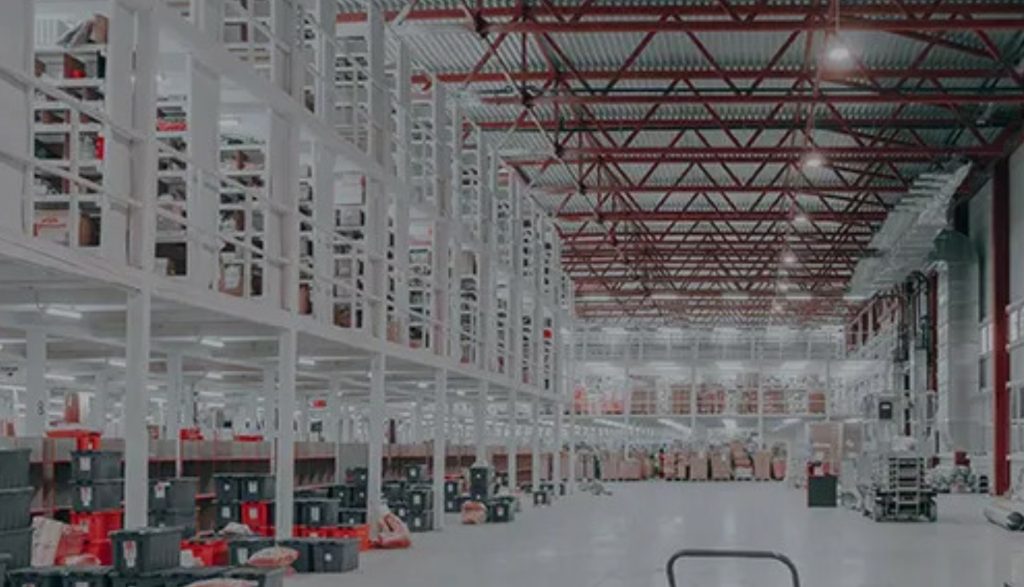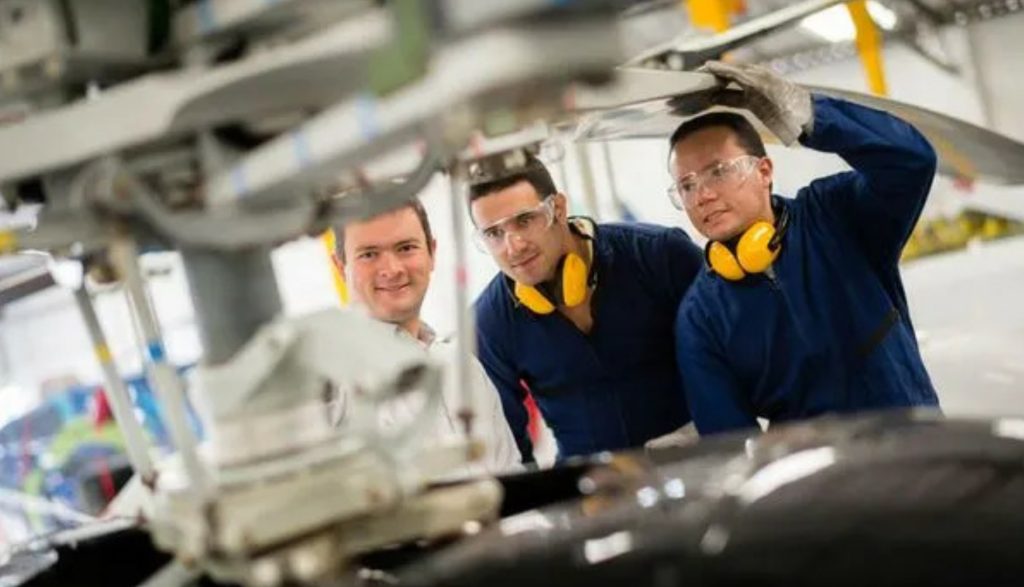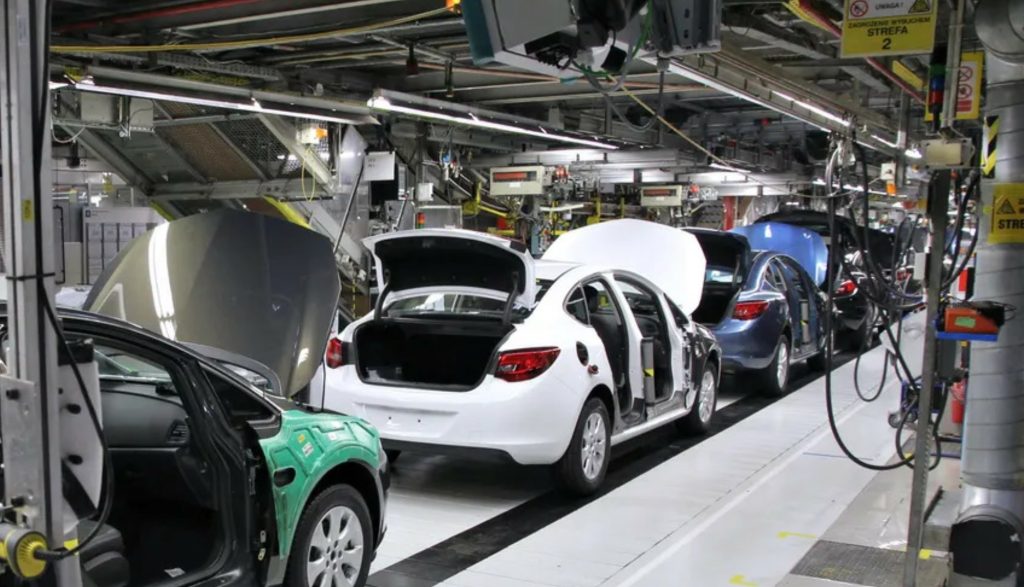Warehouse Distributors

Efficiency In Motion: How Warehouse Distributors Are Driving Speed And Accuracy In Auto Parts Delivery The Heart of the Supply Chain In today’s fast-paced automotive industry, the importance of efficient supply chain management cannot be overstated. Warehouse distributors serve as the backbone of this operation, ensuring that auto parts reach their destinations quickly and accurately. Every second counts, especially in a world where customers expect instant gratification and businesses thrive on competitive edges. To succeed in this crucial role, distributors have been adopting innovative technologies and streamlining processes, all while keeping a human touch at the forefront of their operations. Technological Innovations at Play At the core of improving efficiency are the technological innovations that warehouse distributors are now embracing. From advanced inventory management systems powered by artificial intelligence to automated picking processes that reduce human error, the landscape is evolving. For instance, robotics are often employed to assist workers in picking and sorting parts, significantly speeding up fulfillment times. These technologies not only enhance operational efficiency but also allow employees to focus on more value-added tasks that require human insight and creativity, like customer service and problem-solving. Training and Empowering the Workforce Just as important as technology is the role of trained personnel in warehouse operations. Distributors are investing in comprehensive training programs that equip staff with the skills necessary to navigate new systems and optimize workflows. By fostering a culture of continuous learning, companies can enhance their team’s capabilities, ensuring that every employee feels empowered to contribute to the larger mission of delivering parts swiftly and accurately. This human element transforms employees into key players in the logistics process, reinforcing the idea that efficiency is not just about machines but also about people. Customer-Centric Approach In an industry where time is of the essence, the customer experience cannot be overlooked. Warehouse distributors are becoming increasingly customer-centric, tailoring their services to meet specific needs. This includes everything from flexible delivery options to real-time tracking systems, allowing customers to stay informed and engaged throughout the delivery process. By humanizing the delivery experience with custom touches, such as personalized communications and dedicated support teams, distributors are not only accelerating the supply chain but also building lasting relationships with clients. Collaboration Across the Supply Chain Efficiency in auto parts delivery doesn’t exist in isolation; it’s a collaborative effort among suppliers, distributors, and retailers. Modern warehouse distributors understand the value of open communication and synergy with their partners. By fostering these relationships, they can better forecast demand, manage inventory levels, and streamline logistics. This collaboration extends to various stakeholders—including manufacturers and aftermarket businesses—ensuring that every point of the supply chain is aligned in its goals. Together, they create a well-oiled machine that drives speed and accuracy by understanding and responding swiftly to market changes. Looking Ahead: The Future of Auto Parts Delivery As we look to the future, the landscape of warehouse distribution for auto parts seems poised for further transformation. With advancements in autonomous vehicles, drone deliveries, and blockchain technology gaining traction, the possibilities are endless. However, amidst this evolution, the need for a human touch will remain paramount. Balancing technological innovations with personalized service will ensure that distributions not only meet demands swiftly but continue to nurture strong, trusted relationships with their customers. The future of auto parts delivery is bright, fueled by efficiency in motion, driven by both technology and the indispensable human spirit. Managing Inventory In Real-time: Strategies For Modern Warehouse Distribution In The Auto Parts Industry the Shift towards Real-time Inventory Management In today’s fast-paced automotive landscape, real-time inventory management has become the heartbeat of warehouse distribution in the auto parts industry. Gone are the days when businesses relied on manual stock counts and outdated management systems that often led to inaccuracies and inefficiencies. The shift towards digital solutions enables businesses to maintain an accurate overview of their inventory at any given moment, helping them meet customer demands promptly. For warehouse managers, this shift is not just about technology; it’s about embracing a philosophy that prioritizes precision, speed, and responsiveness. Leveraging Technology for Enhanced Visibility Central to effective real-time inventory management are modern technologies such as RFID, barcode scanning, and cloud-based inventory systems. These tools provide businesses with an unparalleled level of visibility over their inventory, allowing managers to track parts as they move through the warehouse. Imagine the power of instantly knowing where every bolt, nut, and filter is located, as well as how many are left in stock. This not only streamlines the picking and packing process but also minimizes instances of overstocking or stockouts, leading to cost savings and happier customers. The Role of Data Analytics in Inventory Optimization Data analytics takes inventory management to the next level by providing insights that drive strategic decision-making. By analyzing historical sales patterns, seasonal fluctuations, and customer purchasing behaviors, warehouse managers can predict which auto parts are likely to fly off the shelves and which ones may linger longer than anticipated. This kind of insight helps optimize stock levels, ensuring that popular items are kept readily available while reducing the hold on slow-moving inventory. Ultimately, better data leads to better decisions, improving overall efficiency and profitability. Training Your Team for Real-time Adaptability No technology can replace the human element in inventory management. For real-time strategies to succeed, it’s essential that the team on the ground is equipped with the skills and knowledge to adapt to new systems and processes. Regular training sessions not only enhance their capabilities in using technology effectively but also instill a culture of agility and responsiveness. Encourage your team to provide feedback on the systems and workflows; an engaged workforce is more likely to identify inefficiencies and suggest improvements, which can lead to smoother operations and a more favorable working environment. Emphasizing Collaboration across Supply Chain Real-time inventory management in the auto parts industry thrives on collaboration, not just within the warehouse, but also across the entire supply chain. By fostering strong relationships with suppliers and utilizing integrations that allow for seamless communication,
Technology

Next-Gen Tech: Exploring the Impact of IoT and Automation in the Auto Parts Supply Chain The Dawn of a New Era The auto parts supply chain is undergoing a remarkable transformation fueled by next-generation technologies such as the Internet of Things (IoT) and automation. As we move deeper into the digital age, manufacturers, suppliers, and retailers are beginning to realize the potential impacts of these innovations on efficiency, cost-effectiveness, and sustainability. These advancements not only optimize business operations but also enhance the overall experience for stakeholders—from factory workers to end consumers. In this quest for efficiency, it’s crucial to explore how these technologies shape the future of the auto parts industry and affect the people behind the processes. IoT: A Web of Connectivity Imagine a world where every component of an auto part can communicate with one another. Thanks to IoT, this is becoming a reality. Using interconnected sensors and devices, manufacturers can track parts in real-time, from production through delivery. This seamless flow of data allows companies to monitor inventory levels, predict shortages before they occur, and ultimately reduce waste. The human element remains critical; for instance, staff are now able to focus on higher-value tasks instead of being bogged down by manual inventory checks. Workers become empowered to make more informed decisions, greatly improving job satisfaction and enhancing productivity. Automating Efficiency As the industry embraces automation, the goal isn’t just about speed—it’s also about meeting the need for greater precision. Automated systems in warehouses and manufacturing plants can reduce human error and ensure that products are assembled and shipped correctly. Robots can manage hazardous tasks, freeing human workers to oversee operations, undertake quality control, or engage in customer service. While fears abound regarding job displacement, the reality is more nuanced: automation is redefining roles rather than eliminating them, cultivating a workforce more focused on active problem-solving and creativity rather than routine tasks. Building a Sustainable Future Sustainability is no longer a buzzword but a necessity in today’s world, and next-gen technologies are playing a pivotal role in responding to this challenge. IoT devices can help companies monitor their energy consumption and resource allocation in real-time, allowing for more efficient use of materials. By reducing waste in production and enhancing the recycling process, businesses can lower their environmental impact. The operational efficiencies enabled by automation also contribute, as decreased energy usage translates to a smaller carbon footprint. As consumers become increasingly eco-conscious, aligning with sustainable practices can create a significant competitive advantage for auto parts suppliers. Enhancing Customer Experience The integration of IoT and automated systems does not merely exist on the production line; it extends to customer interaction as well. Real-time tracking enables auto parts retailers to provide customers with accurate delivery estimates, while predictive analytics helps anticipate their needs based on historical purchase data. Such personalized interactions not only enhance customer satisfaction but also build brand loyalty. By leveraging these technologies, businesses demonstrate that they consider their customers’ time and needs, establishing a more human connection that transcends the transactional nature of the supply chain. A Future Shaped by Technology and Humanity As we gaze into the horizon of technological possibilities, it’s essential to recognize that the human element must remain at the core of this evolution. The integration of IoT and automation in the auto parts supply chain opens new avenues for collaboration and innovation. Employees will have the opportunity to upskill, adapt, and grow alongside these technologies, fostering an environment ripe for continuous progress. In this way, the future of the auto parts supply chain is not just about machines doing the work; it’s about creating a harmonious relationship between technology and the vibrant, skilled individuals who drive the industry forward. Tech Trends in Auto Parts: How Innovation Is Shaping the Future of the Industry The Digital Revolution in Auto Parts The automotive industry is experiencing a seismic shift, driven by rapid technological advancements that are redefining traditional methods of production and distribution in auto parts. With the advent of smart manufacturing and digital platforms, businesses are no longer bound by the constraints of legacy systems. These innovations allow for enhanced efficiency, cost reduction, and improved inventory management, ultimately offering consumers a better experience. As traditional automotive and tech companies forge new partnerships, the landscape of auto parts is evolving, creating a fusion of old and new that’s exciting and full of possibilities. 3D Printing: The Game Changer One of the most groundbreaking innovations has been the rise of 3D printing, or additive manufacturing, which offers unprecedented customization and efficiency in producing auto parts. This technology allows manufacturers to create tailored components quickly and economically, reducing waste and inventory costs. Imagine a future where car enthusiasts can order bespoke parts delivered directly to their doors, designed and printed within days. Not only does this innovation cater to individualized taste, but it also streamlines the supply chain, making fulfillment faster and more sustainable. With major automakers investing in 3D printing technology, this isn’t just a trend—it’s a powerful shift towards a more adaptable industry. The Role of Artificial Intelligence Artificial Intelligence (AI) is another powerful force reshaping the auto parts industry. From predictive analytics that forecast demand trends to machine learning algorithms that help development teams design better components, AI enhances efficiency at every level. For instance, by analyzing customer preferences and historical purchase data, companies can optimize production schedules and minimize surplus goods. Moreover, AI-assisted maintenance tools can alert vehicle owners about potential issues before they escalate, driving a proactive rather than reactive approach to care. As this technology continues to evolve, our relationship with our vehicles is poised to become more intuitive and personal. Electric Vehicles and Sustainable Manufacturing The automotive industry’s ongoing transition to electric vehicles (EVs) is significantly impacting the auto parts landscape. With increasing pressure on manufacturers to adopt sustainable practices, we are witnessing an upsurge in eco-friendly materials and manufacturing processes. Innovations in battery technology, lightweight materials, and energy-efficient manufacturing techniques are not only essential for developing EVs but
Manufacturers

From Concept To Consumer: Navigating The Changing Landscape Of Auto Parts Manufacturing Introduction: Knowing the Shift The automotive industry is undergoing a significant transformation, reshaping the way auto parts are manufactured and delivered to consumers. As technological advancements, consumer expectations, and global economic factors converge, the auto parts manufacturing landscape is becoming more complex and dynamic. For industry players, from small suppliers to major manufacturers, understanding this shift is essential not just for survival, but for thriving in a competitive market. Embracing Innovation: Technologies Reshaping the Industry At the heart of this transformation is innovation. Technologies such as 3D printing, automation, and artificial intelligence are revolutionizing how auto parts are designed and produced. For example, 3D printing enables rapid prototyping, allowing manufacturers to create and test parts more efficiently than ever before. This reduces the time from concept to consumer significantly, catering to the aggressive timelines of automotive production. Additionally, automation is streamlining production lines, improving accuracy, and minimizing waste. Sustainability: Meeting the Eco-Conscious Consumer With an increasing number of consumers prioritizing sustainability, the auto parts manufacturing sector must adapt. More than just a trend, the eco-conscious consumer now expects companies to minimize their environmental impact. In response, manufacturers are adopting practices such as using recycled materials, reducing energy consumption, and developing eco-friendly packaging solutions. This shift not only enhances brand loyalty but can also result in cost savings and efficiency gains in the long run. Global Supply Chain Challenges: A New Reality Today’s global supply chain presents both opportunities and challenges for the auto parts industry. Disruptions caused by geopolitical tensions, pandemics, and unexpected natural disasters have highlighted vulnerabilities in manufacturing processes. Companies are now considering reshoring production or diversifying their supply chains to mitigate risks. Navigating this complex web requires a new level of agility and forethought, ultimately impacting the time it takes to get products to consumers. Consumer-Centric Approaches: Delivering What They Want In the evolving landscape of auto parts manufacturing, understanding consumer needs has become more critical than ever. The rise of e-commerce has shifted expectations; consumers want convenience and access to quality parts at competitive prices. Manufacturers are responding by establishing direct-to-consumer models, enhancing online presence, and providing exceptional customer service. Personalizing the buying experience through data analytics can help identify trends and preferences, fostering loyalty and repeat business. Preparing for the Future As we look to the future of auto parts manufacturing, it is essential for companies to remain adaptable and forward-thinking. Embracing innovation, prioritizing sustainability, navigating global challenges, and understanding consumer desires will be critical to success. The landscape may be shifting, but with the right strategies and a focus on humanizing the manufacturing process, companies will not only survive but can emerge stronger in a fast-paced world. By putting people at the center of these changes—both employees and consumers alike—the industry can ensure that it evolves in a way that resonates with the values of today’s society. Revolutionizing Production: The Role Of Innovation In Modern Auto Parts Manufacturing Introduction: Knowing the Shift The automotive industry is undergoing a significant transformation, reshaping the way auto parts are manufactured and delivered to consumers. As technological advancements, consumer expectations, and global economic factors converge, the auto parts manufacturing landscape is becoming more complex and dynamic. For industry players, from small suppliers to major manufacturers, understanding this shift is essential not just for survival, but for thriving in a competitive market. Embracing Innovation: Technologies Reshaping the Industry At the heart of this transformation is innovation. Technologies such as 3D printing, automation, and artificial intelligence are revolutionizing how auto parts are designed and produced. For example, 3D printing enables rapid prototyping, allowing manufacturers to create and test parts more efficiently than ever before. This reduces the time from concept to consumer significantly, catering to the aggressive timelines of automotive production. Additionally, automation is streamlining production lines, improving accuracy, and minimizing waste. Sustainability: Meeting the Eco-Conscious Consumer With an increasing number of consumers prioritizing sustainability, the auto parts manufacturing sector must adapt. More than just a trend, the eco-conscious consumer now expects companies to minimize their environmental impact. In response, manufacturers are adopting practices such as using recycled materials, reducing energy consumption, and developing eco-friendly packaging solutions. This shift not only enhances brand loyalty but can also result in cost savings and efficiency gains in the long run. Global Supply Chain Challenges: A New Reality Today’s global supply chain presents both opportunities and challenges for the auto parts industry. Disruptions caused by geopolitical tensions, pandemics, and unexpected natural disasters have highlighted vulnerabilities in manufacturing processes. Companies are now considering reshoring production or diversifying their supply chains to mitigate risks. Navigating this complex web requires a new level of agility and forethought, ultimately impacting the time it takes to get products to consumers. Consumer-Centric Approaches: Delivering What They Want In the evolving landscape of auto parts manufacturing, understanding consumer needs has become more critical than ever. The rise of e-commerce has shifted expectations; consumers want convenience and access to quality parts at competitive prices. Manufacturers are responding by establishing direct-to-consumer models, enhancing online presence, and providing exceptional customer service. Personalizing the buying experience through data analytics can help identify trends and preferences, fostering loyalty and repeat business. Preparing for the Future As we look to the future of auto parts manufacturing, it is essential for companies to remain adaptable and forward-thinking. Embracing innovation, prioritizing sustainability, navigating global challenges, and understanding consumer desires will be critical to success. The landscape may be shifting, but with the right strategies and a focus on humanizing the manufacturing process, companies will not only survive but can emerge stronger in a fast-paced world. By putting people at the center of these changes—both employees and consumers alike—the industry can ensure that it evolves in a way that resonates with the values of today’s society. Sustainability In Manufacturing: How The Auto Parts Industry Is Adapting For The Future The Auto Parts Industry’s Wake-Up Call The auto parts industry, a critical component of the global automotive
Etailers & Retailers

E-tailers Vs. Retailers: Winning The Race For Customer Loyalty In The Auto Parts Industry The Landscape In the fast-paced world of auto parts supply, two primary players dominate the market: e-tailers and traditional retailers. As consumers increasingly turn to online shopping for convenience, e-tailers have gained tremendous ground in capturing the loyalty of customers. Yet, the brick-and-mortar experience remains essential for many car enthusiasts and DIY mechanics. This article explores the strategies each side employs to win customer loyalty in a changing landscape, highlighting both the highs and lows they encounter along the way. E-tailers: Convenience and Variety at Your Fingertips E-tailers, such as RockAuto and AutoZone.com, cater to the modern shopper’s desire for ease and efficiency. The convenience of browsing vast inventories from the comfort of home, combined with the ability to compare prices in real-time, has made online shopping a go-to option for many. These platforms can often offer specialized parts for unique vehicles or hard-to-find components that may not be available in a local store. Furthermore, e-tailers frequently provide user-friendly interfaces, detailed product descriptions, and customer reviews that can educate novice mechanics and seasoned pros alike. They leverage technology and data analytics to tailor recommendations, ensuring that customers find exactly what they need when they need it. Retailers: The Human Touch However, brick-and-mortar retailers offer something that e-tailers struggle to replicate: personal interaction. Auto parts stores like AutoZone and O’Reilly Auto Parts take pride in having knowledgeable staff who can provide tailored advice and hands-on support to customers. Many shoppers appreciate the ability to physically inspect parts, engage with personnel who can troubleshoot issues, and even receive assistance with installation. This human touch fosters trust and rapport, forging stronger emotional connections that can lead to lasting brand loyalty. When a customer walks into a store and feels welcomed, they are more likely to return for future purchases. The Balancing Act: Price vs. Service One of the most critical battlegrounds for customer loyalty in the auto parts industry is the delicate balance between price and service. E-tailers often have lower prices due to reduced overhead costs, but a seemingly cheap part can come at a price if the service side is lacking. Customers may save money, but they may also experience delays in shipping or receive poor after-sales support. On the other hand, retailers may charge slightly higher prices, but the added value of in-store expertise and immediate product availability can justify that cost. Ultimately, consumers are faced with a dilemma: Do they prioritize cost savings or the benefits of personalized service and instant access? Adopting Omnichannel Strategies To thrive in this competitive environment, both e-tailers and traditional retailers are adopting omnichannel strategies. E-tailers are investing in expanded customer service lines, faster shipping options, and local inventory to fulfill orders quickly. Meanwhile, brick-and-mortar stores are enhancing their online presence, allowing customers to order ahead and pick up in-store, bridging the gap between digital and physical shopping experiences. Companies that can effectively integrate both channels stand to capture a broader audience and provide customers with the seamless shopping experience they crave. Building Lasting Relationships In the end, winning customer loyalty in the auto parts industry requires more than just sales tactics; it requires building genuine relationships. Both e-tailers and retailers must listen to their customers, understand their needs, and tailor their offerings accordingly. Whether it’s through personalized shopping recommendations or fostering a community-like atmosphere in-store, the key lies in valuing customers as individuals with unique automotive needs. By understanding that loyalty is built on trust, transparency, and meaningful interactions, both e-tailers and traditional retailers can secure their place in this competitive landscape. Ultimately, the race for customer loyalty may not have a clear winner, as both sides continue to evolve and adapt in response to changing consumer preferences. Omnichannel Strategies: Blending Online And In-store For Maximum Impact In Auto Retail Setting the Scene: The Evolving Landscape of Auto Retail The world of auto retail is shifting faster than ever before. In an age where consumers are empowered with information at their fingertips, dealerships are faced with the challenge of meeting customers’ increasingly sophisticated shopping habits. Gone are the days when a spontaneous visit to a dealership would suffice. Today’s car buyers often research extensively online, comparing models, prices, and reviews before even stepping foot on a lot. In this climate, adopting omnichannel strategies has become essential for auto retailers to engage with customers effectively—blending the online and in-store experience into one seamless journey. Understanding the Omnichannel Customer Journey To create a robust omnichannel strategy, it’s crucial to first understand the customer journey. Consumers often oscillate between online research and in-store visits, driven by their need for information and tangibility. They may begin their search on a dealer website, scroll through a social media ad, read reviews on a third-party site, and finally decide to visit the dealership to test drive the car. Each touchpoint presents a rich opportunity for dealerships to bond with potential buyers. By tailoring marketing efforts to meet customers where they are—whether that’s in digital spaces or at the dealership—auto retailers can forge deeper connections and drive conversions. Crafting a Unified Brand Experience Creating a cohesive brand experience across various channels is at the heart of effective omnichannel strategies. This involves syncing online platforms with the physical dealership environment to ensure that customers receive consistent messaging and engagement. Imagine walking into a dealership and finding all the information, promotions, and car models that you had previously browsed online present at the touch of a button on a kiosk. Moreover, leveraging customer data allows retailers to personalize the experience further—offering buyers tailored recommendations and special promotions based on their online behavior, thus making them feel recognized and valued. Embracing Technology: Tools of the Trade The implementation of technology is a game changer in the world of omnichannel auto retail. Tools such as Customer Relationship Management (CRM) systems, AI chatbots, and integrated marketing platforms can streamline processes and facilitate communication between online and in-store environments. For instance,
Automakers & Original Equipment

Bridging The Gap: How Aftermarket And Oem Parts Can Coexist For Better Consumer Choice Two Sides of the Coin In the world of automotive repair and maintenance, consumers often find themselves at a crossroads between choosing Original Equipment Manufacturer (OEM) parts and aftermarket alternatives. OEM parts, produced by the vehicle’s manufacturer, are synonymous with precision and reliability, while aftermarket parts, provided by third-party companies, can offer greater affordability and accessibility. As vehicle technology advances and consumer preferences evolve, it’s essential for drivers to understand the strengths and weaknesses of both options. More importantly, recognizing how these two categories can coexist may empower consumers and lead to better informed decisions, ultimately enhancing their ownership experience. The Allure of OEM: Quality Without Compromise For many car owners, the appeal of OEM parts lies in their guaranteed quality and compatibility. Each OEM component is designed to meet the specific standards set by the manufacturer, meaning that they fit well and function optimally in the intended vehicle. This reliability is particularly crucial for essential systems such as brakes or engines, where safety cannot be compromised. Furthermore, using OEM parts can maintain a vehicle’s warranty, ensuring that any manufacturer-related concerns remain addressed. For some, the peace of mind offered by OEM parts justifies the often-higher price tag, making the choice feel less like a compromise and more like an investment in safety and reliability. The Rising Popularity of Aftermarket Parts: Value Meets Versatility While OEM parts have their merits, aftermarket parts are garnering interest for a multitude of reasons. Firstly, they provide consumers with more options—ranging from economy to high-performance parts that can enhance a vehicle’s capabilities. In an era where budget constraints often dictate purchasing decisions, many drivers find solace in the affordability of aftermarket options. Additionally, the aftermarket industry has matured, with many manufacturers adhering to strict quality standards that rival those of OEM. This evolution has led to a growing trust in aftermarket parts, dispelling past misconceptions and empowering consumers to explore alternatives without feeling like they’re taking a risk. Finding Common Ground: A Collaborative Approach The relationship between OEM and aftermarket parts doesn’t have to be adversarial. Both sectors can complement each other, providing a comprehensive toolkit for vehicle maintenance and enhancement. For instance, a driver might choose OEM for critical repairs involving safety systems while opting for aftermarket options elsewhere as a cost-effective solution. This hybrid approach not only allows for personalization and adaptation to individual budgets but also fosters a flexible market environment where competition drives innovation and reduces costs. As such, both aftermarket businesses and manufacturers can thrive by recognizing the potential benefits of collaboration rather than competition. Educating Consumers: The Key to Empowerment Knowledge is the catalyst for informed decision-making. By providing consumers with the information they need about both OEM and aftermarket parts, the automotive industry can empower them to make choices that best fit their needs. Educational initiatives can help demystify the complexities surrounding both forms of parts, illuminating the factors that should influence their decisions, such as cost, warranty implications, and long-term reliability. Workshops, online resources, and community forums can bridge the gap between consumers and industry experts, fostering understanding and confidence in selecting the right products. The coexistence of OEM and aftermarket parts is not just a trend; it represents a paradigm shift in consumer choice and autonomy. By embracing this diversity, manufacturers and consumers alike can reap the benefits of a robust market that caters to various needs and preferences. Whether a driver opts for OEM or aftermarket parts, the true victory lies in their ability to choose what works best for their lifestyle and vehicle. Together, OEM and aftermarket parts can forge a path toward a future where consumers are informed, empowered, and ultimately satisfied with their automotive choices. Through this collaboration, the automotive industry can elevate the consumer experience, proving that, in the end, variety truly is the spice of life. Driving Growth: Key Strategies For Aftermarket And Oem Parts In A Competitive Landscape The Competitive Landscape In today’s rapidly evolving automotive industry, the competition among aftermarket and Original Equipment Manufacturer (OEM) parts suppliers is fiercer than ever. With the rise of e-commerce, advances in technology, and shifting consumer preferences, businesses in this sector must adapt to stay relevant. Understanding the competitive landscape is crucial; it involves analyzing both direct competitors and emerging market disruptors. In this multifaceted environment, companies must develop clear strategies and a keen awareness of market trends to thrive. The Power of Customer Relationships At the heart of driving growth in both the aftermarket and OEM sectors lies the cultivation of strong customer relationships. Customers today want trust, transparency, and personalized experiences. Companies can achieve this by investing in robust Customer Relationship Management (CRM) systems and leveraging data analytics to understand purchasing behaviors better. Regular communication through personalized emails, loyalty programs, and social media engagement can help foster relationships, turning first-time buyers into repeat customers. As the saying goes, it costs significantly less to keep a customer than to acquire a new one. Embracing Technology and E-Commerce The digital age has transformed the way consumers shop for automotive parts, making e-commerce an indispensable tool for growth. Companies must embrace technology by optimizing their online presence, implementing user-friendly websites, and ensuring they’re easily found on search engines. Beyond just having an online store, incorporating innovative technologies like augmented reality for parts visualization or artificial intelligence for inventory management can provide a competitive edge. The ability to offer seamless online and offline shopping experiences will not only enhance customer satisfaction but also drive sales. Diversification of Product Lines In a saturated market, relying on a limited range of products can be detrimental. Diversification of product lines can be a key growth strategy for both aftermarket and OEM parts businesses. This can include expanding into new categories, such as electric vehicle components as the industry shifts towards sustainability, or introducing accessories and enhancements that cater to niche markets. Collaborating with manufacturers to create private-label products can also provide
Magazine Volume 1.5

-FEATURED SECTIONS- Automakers & Original Equipment Etailers & Retailers Manufacturers Technology Warehouse Distributors JANUARY 2025 JANUARY-ARTICLES Bridging The Gap: How Aftermarket And Oem Parts Can Coexist For Better Consumer Choice Driving Growth: Key Strategies For Aftermarket And Oem Parts In A Competitive Landscape The Future Of Aftermarket: What Oems Can Learn From The Independent Market E-tailers Vs. Retailers: Winning The Race For Customer Loyalty In The Auto Parts Industry Omnichannel Strategies: Blending Online And In-store For Maximum Impact In Auto Retail The Digital Shift: How E-tailers Are Redefining Auto Parts Sales” SUBSCRIBER EXCLUSIVE [noptin-form id=228825] LATEST ISSUES